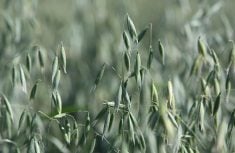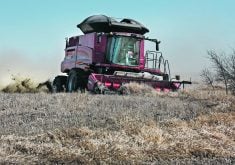Burning flax may be a traditional way to prepare for spring seeding, but the Lung Association of Saskatchewan says the health risks aren’t worth it.
With spring around the corner, some farmers are going to be employing controlled burning to get rid of the straw from last year’s harvest. The Saskatchewan Flax Development Commission is urging producers to be mindful of the impact this can have on people with heart and lung conditions.
“We don’t want to see any burning going on, basically,” said Paul Van Loon, president of the Lung Association of Saskatchewan. “When you burn any kind of plant material you produce a lot of smoke and it’s the (particles) in smoke that can be harmful to health.”
Read Also

VIDEO: Ag in Motion documentary launches second season
The second season of the the Western Producer’s documentary series about Ag in Motion launched Oct. 8.
If farmers have no other choice but to burn, they should take the following things into consideration.
- Don’t burn at night. Moist conditions can create more harmful smoke. Calmer conditions can cause the smoke to stick around longer. Only burn after 11 a.m. and extinguish before dusk.
- Always have a quick and easy way to extinguish the fire if necessary.
- Only burn when the wind will allow for a quick upward dispersal of smoke. Farmers can consult Environment Canada regarding wind conditions in their areas. Never allow smoke to drift over neighbouring roads or communities.
- Do not burn across a whole field. Piling or baling the straw means it will burn faster and hotter, creating fewer emissions.
Although these habits can minimize emissions and the danger for individuals sensitive to smoke, Van Loon urged producers to think of burning as a last resort.
“The majority of people are not burning. It’s a minority of people that are burning, so that suggests that other people are dealing with the problem in a better way.”














